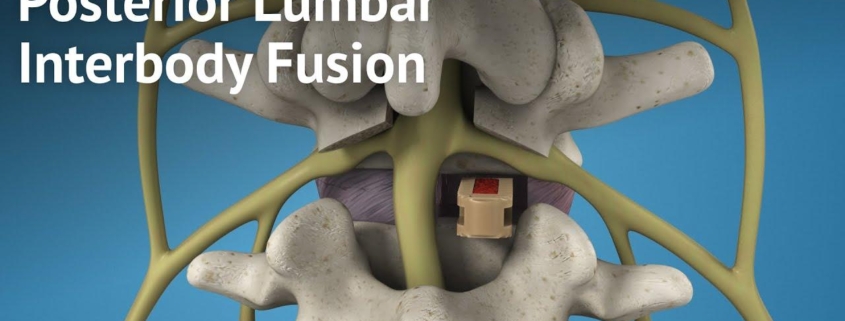
Posterior Lumbar Interbody Fusion
Overview
Posterior Lumbar Interbody Fusion (PLIF) is a surgical procedure employed to treat specific types of lower back and leg pain. This operation involves the fusion of two or more vertebrae in the lower back. The “posterior” aspect implies that the surgery is performed through the back (“posterior”). “Lumbar” refers to the lower spine, “interbody” fusion indicates that the diseased disc located between two vertebrae is removed, and “fusion” is the process of joining two bones together.
Types
While the core concept of a PLIF surgery remains consistent, variation can occur based on the technique used by your surgeon. The two main types are:
-
- Traditional PLIF: Involves a larger incision and more muscle retraction. Generally, the entire disc is removed and replaced with a bone graft.
-
- Minimally invasive PLIF: Carried out through smaller incisions with less muscle trauma. Typically, only part of the disc is removed, retaining as much of the natural structure as possible.
Causes
PLIF is typically used to treat conditions causing severe and debilitating lower back and leg pain that hasn’t improved with non-surgical treatments. Some typical conditions may include:
-
- Spinal stenosis
-
- Spondylolisthesis
-
- Herniated discs
-
- Recurrent disc herniation
-
- Degenerative disc disease
Symptoms
Patients requiring PLIF typically experience persistent, debilitating low back pain and, in some cases, leg pain. The pain may be sharp or a dull, constant ache. Other common symptoms include:
-
- Numbness, tingling, or weakness in the legs or feet
-
- Pain worsened by standing, walking, or sitting for extended periods
-
- Pain relieved when lying down or leaning forward
Diagnosis
PLIF surgery is typically recommended when conservative treatments fail to provide relief. To diagnose the condition, the doctor may conduct a physical examination and neurological test and review your medical history. Imaging tests such as X-rays, CT scans, or MRI may also be used.
Treatment Options
While PLIF is a surgical option, it’s used when conservative treatments such as physical therapy, medications, and spinal injections do not provide sufficient relief. The procedure involves removing the damaged disc and replacing it with a bone graft. The aim is to alleviate pressure on the spinal nerves and enable the vertebrae to fuse together, reducing the pain.
Living With Posterior Lumbar Interbody Fusion
After a PLIF surgery, it’s essential to adhere to your doctor’s post-surgery instructions to facilitate recovery. Pain management, physiotherapy exercises could play a crucial part in the recovery process. Lifestyle changes such as maintaining a healthy weight, quitting smoking, and adopting a proper posture can help ensure a successful recovery.
When to Seek Help
If you’re dealing with persistent lower back pain that hasn’t improved with lifestyle modifications or conservative treatments, it may be time to explore surgical options such as PLIF. Watch for signs such as increased pain, numbness, tingling, or loss of bladder or bowel control, since these may indicate a more severe condition needing immediate medical attention. If your pain is interfering with your daily life, don’t hesitate to seek help.
With modern medical science, PLIF has become a highly effective method for dealing with lower back pain that significantly interferes with your quality of life. It is, however, crucial to understand it’s typically considered when non-surgical treatments have been exhausted. As is the case with any surgery, it’s essential to discuss your options thoroughly with a medical professional before deciding on a course of action.
